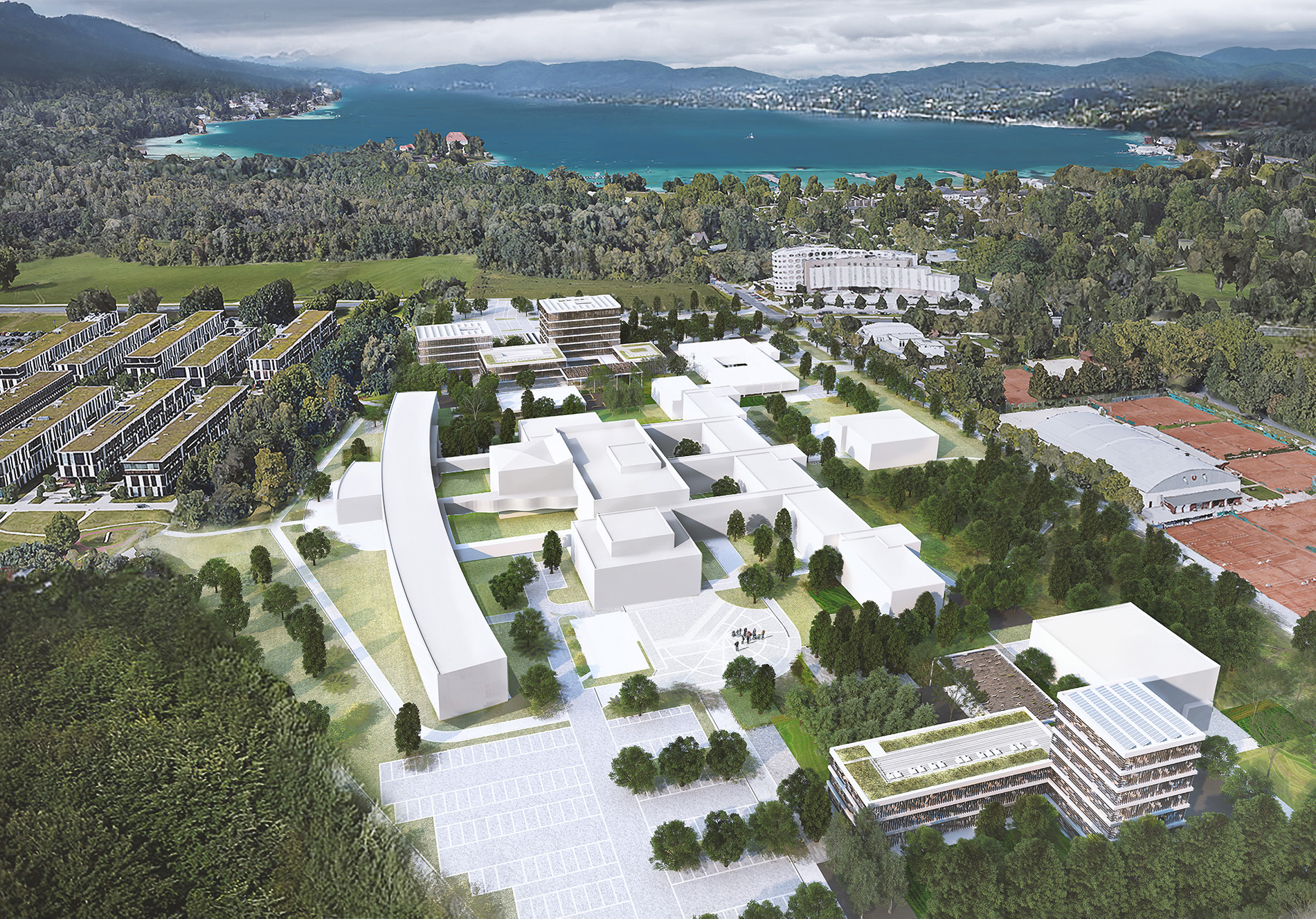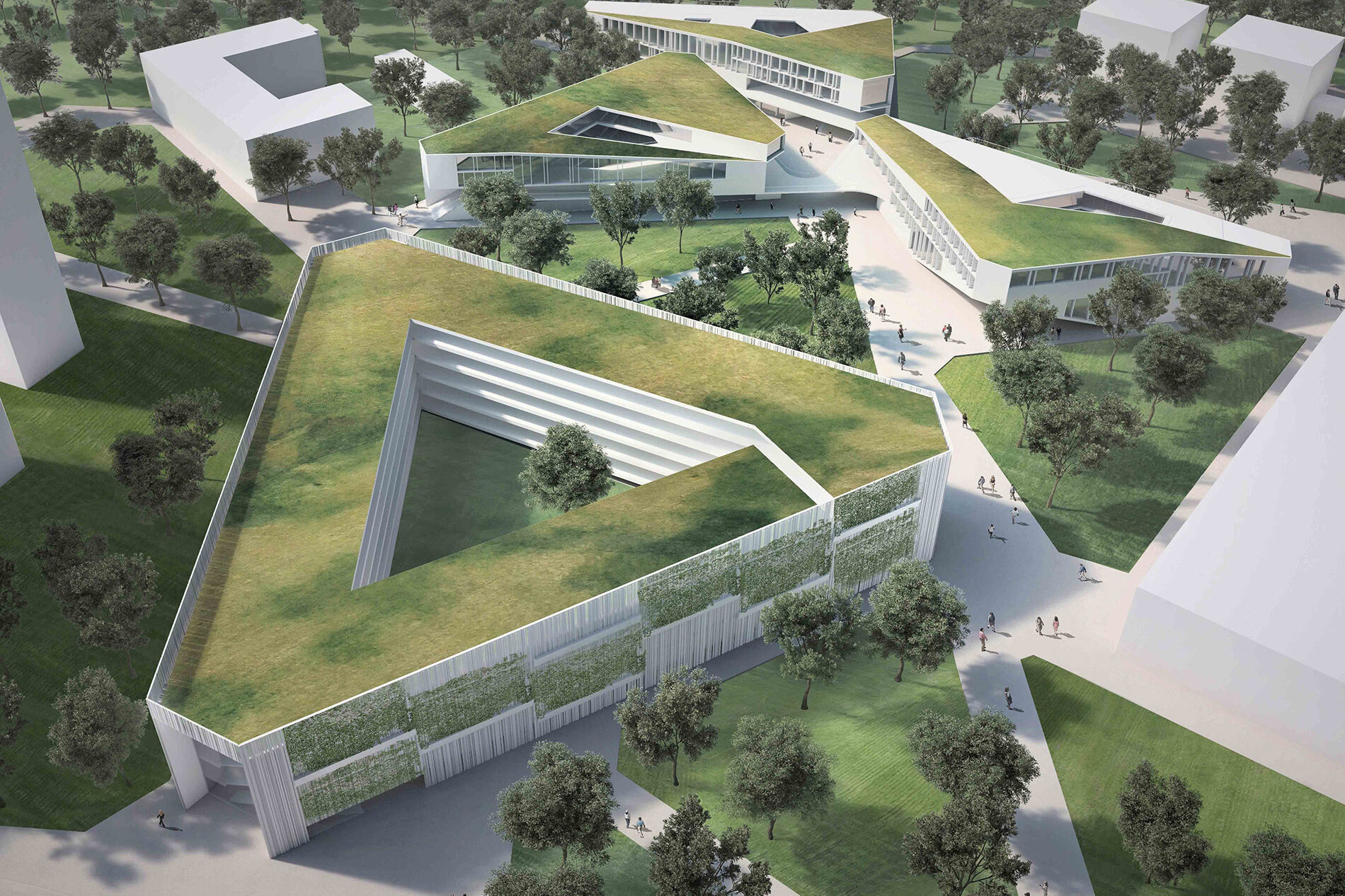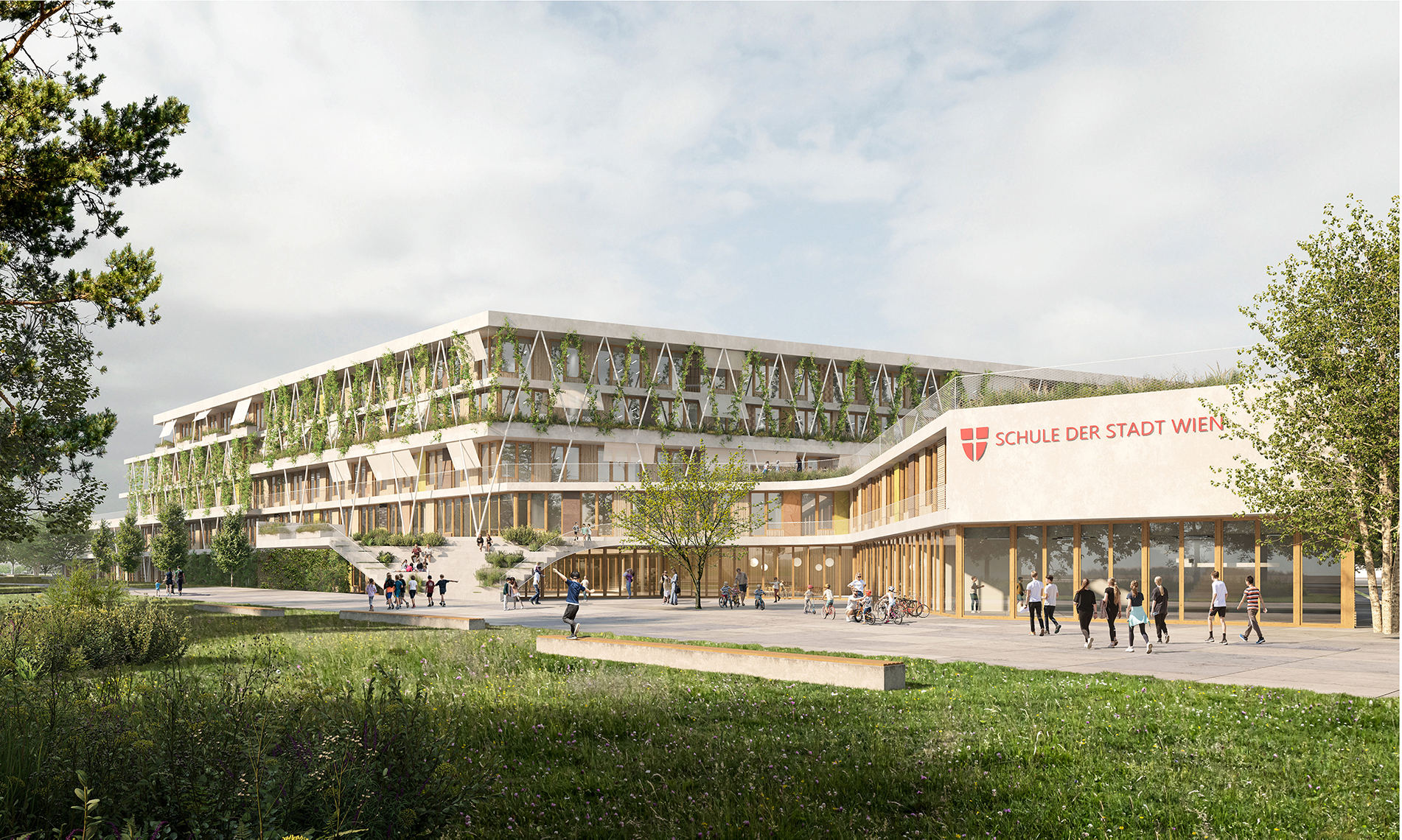The courtyard space and the entire situation towards the Hofgarten is extensively reinterpreted. Not only is the building moved away from the garden wall, directly past the Audi Max it is undercut in order to provide good access by foot and car to the pavilion in the Hofgarten, or to the Hofgarten itself. In return we create a further access situation from the Hofgarten into the foyer. In the western wing lecture theatres, which can be opened to the outdoors, were placed at ground floor level.
MCI Campus
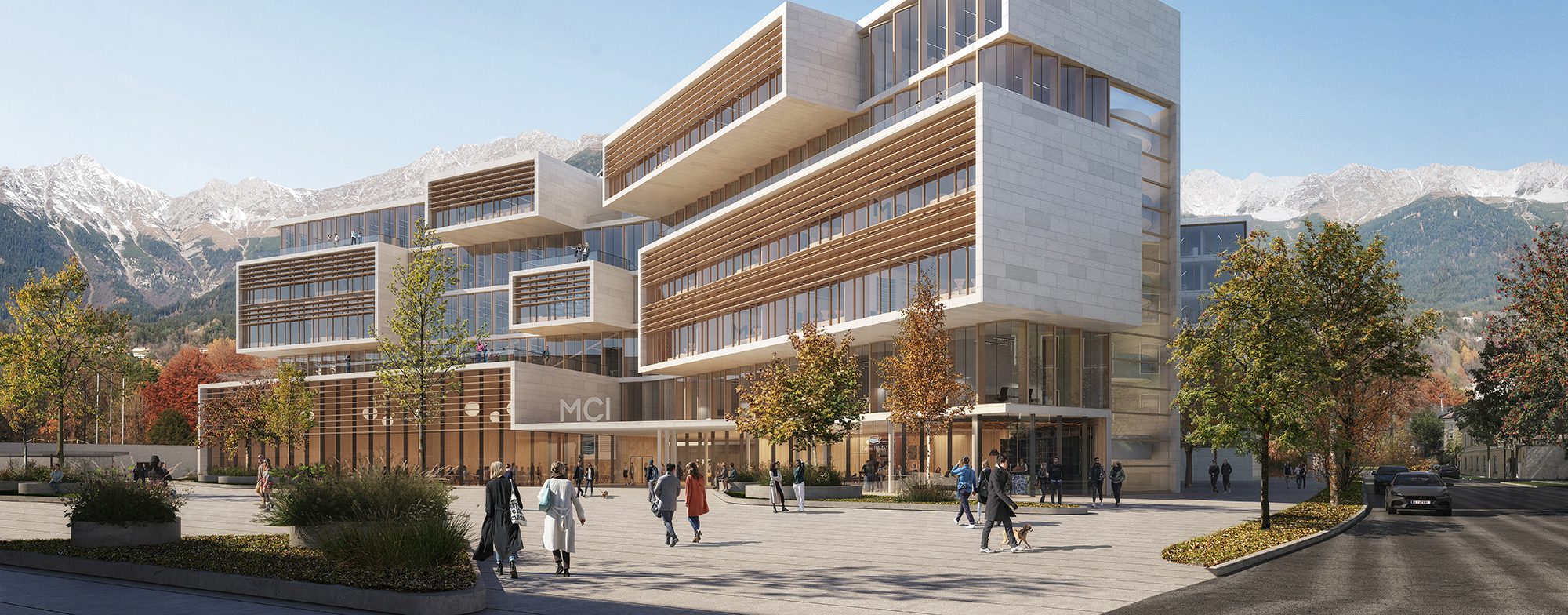
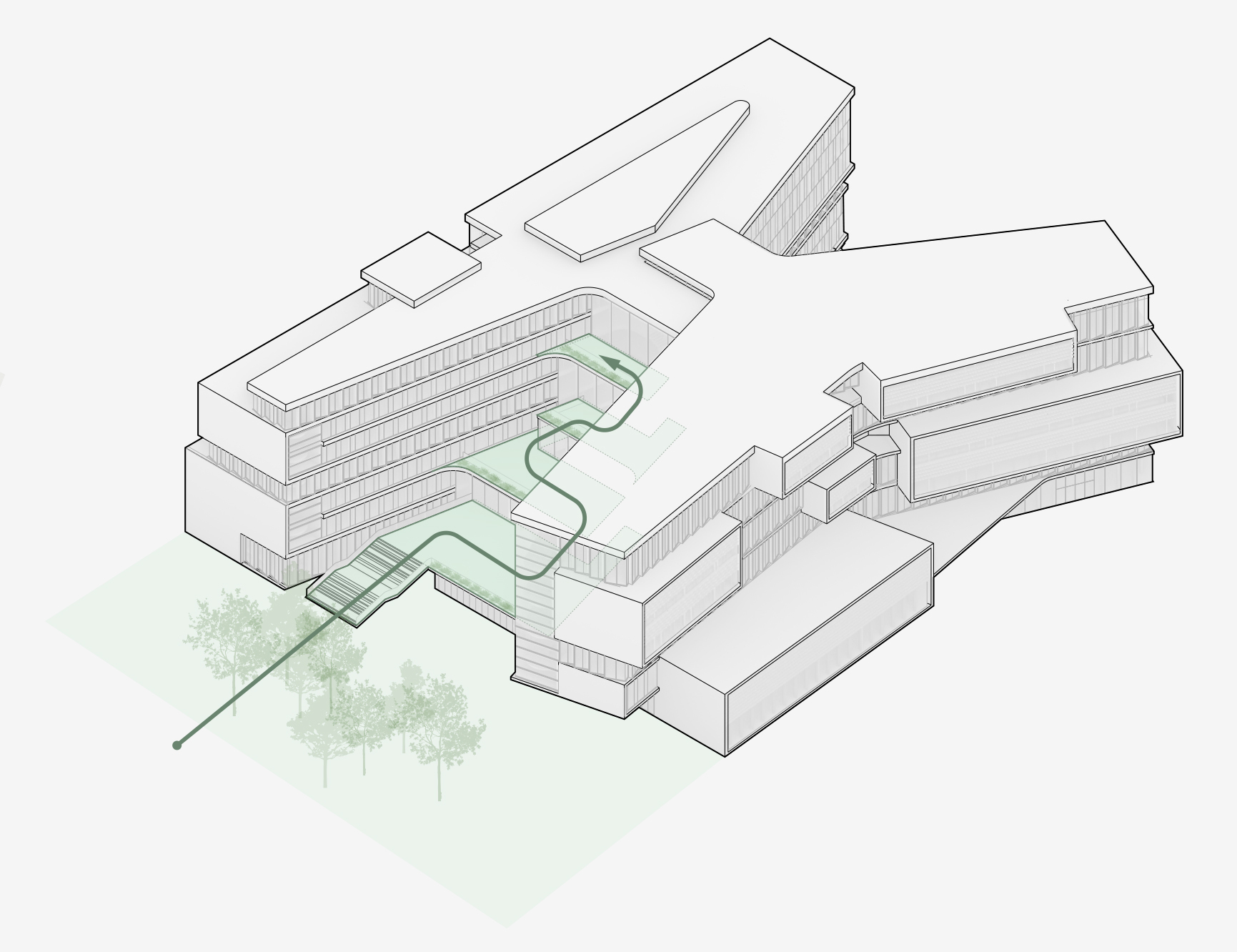
A dynamic educational facility as an autonomous urban volume with a relationship to the landscape.
Year
2021
Venue
Innsbruck
State
Competition
Category
Education
Size
38.475 m²
Year |
Venue |
State |
Category |
Size |
|---|---|---|---|---|
2021 |
Innsbruck |
Competition |
Education |
38.475 m² |
Year
2021
Venue
Innsbruck
State
Competition
Category
Education
Size
38.475 m²
Urban design aspects
The new MCI is still developed out of the geometry of the site, i.e., from the corners of the proposed building area – but now more in a metaphoric sense. The project is now designed more as an individual volume, which is clearly moved away from the site boundaries and is ascribed a more autonomous character in the urban morphology. The form of the volume is, nevertheless, derived from contextual relationships, some closer, others more distant, but it is articulated more clearly and makes references to its surroundings. The criticism that, in part, the building‘s appearance is somewhat hostile to the sides was addressed by making several changes.
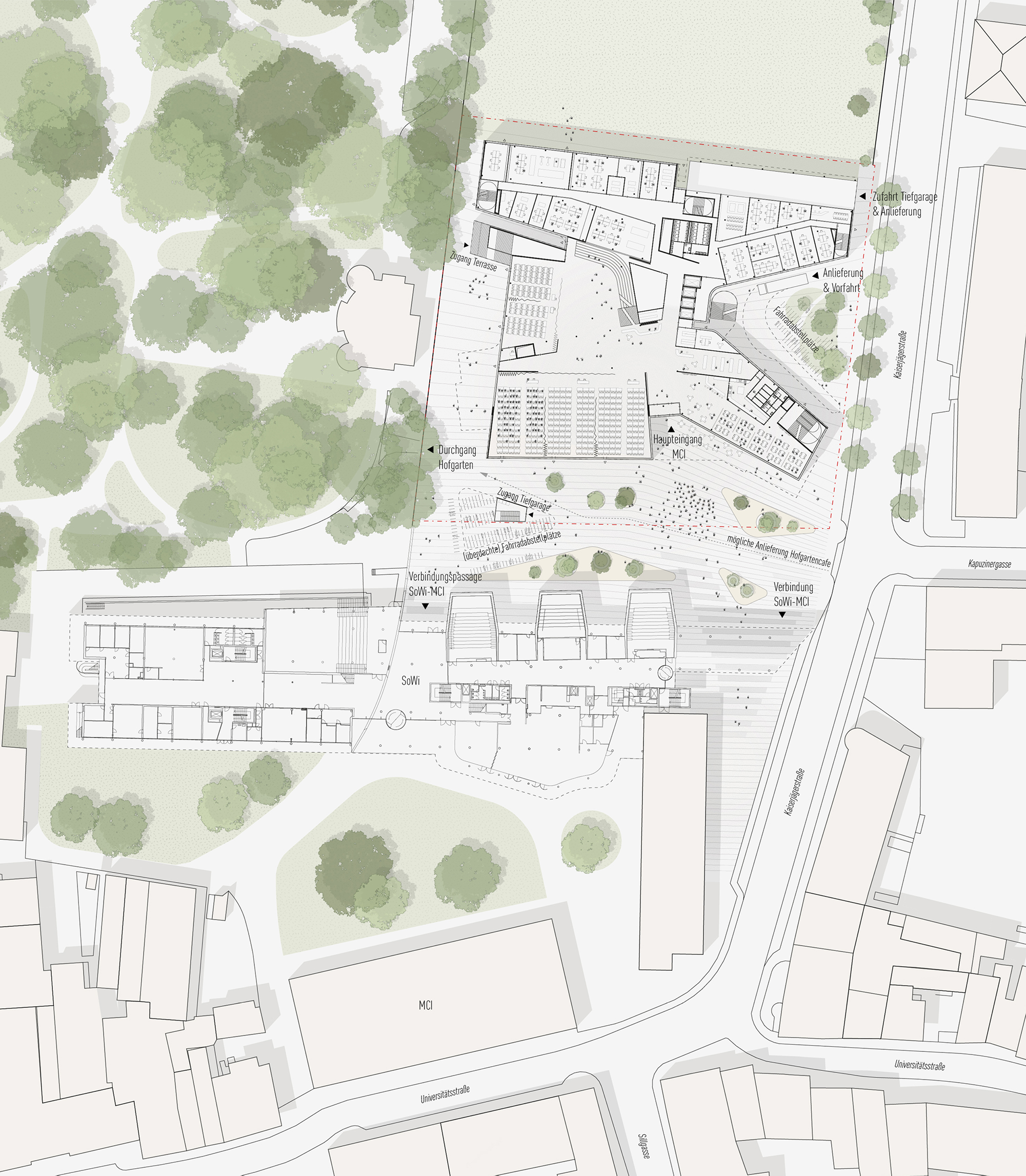
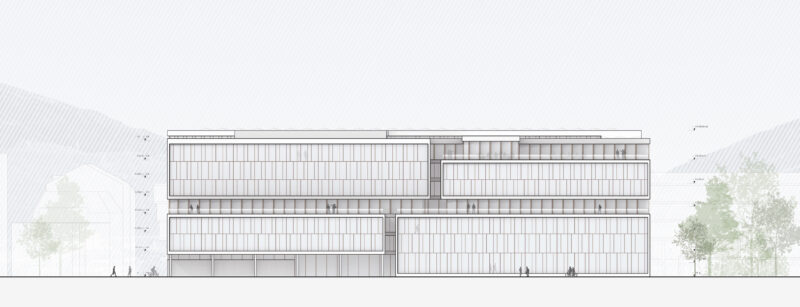
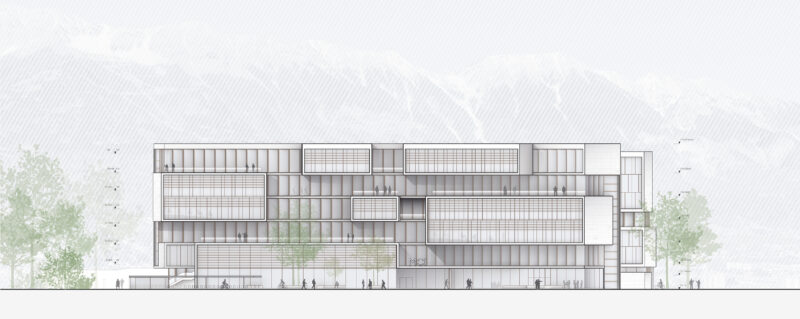
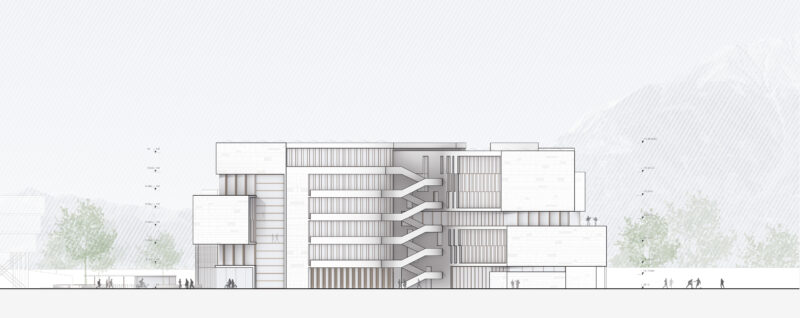
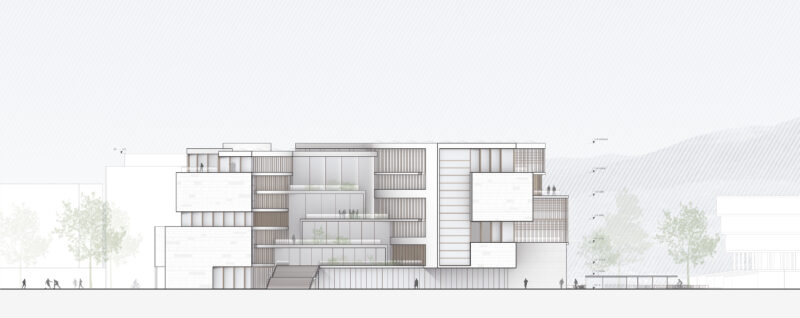
First of all, the monotonous planar north facade was broken up and replaced by a composition of various volumes that are staggered in different heights and depths. Essentially, the south facade with its concave gesture that creates a public square is retained, but is, equally clearly, reshaped. Here, too, certain areas (mostly lecture halls and seminar rooms) are combined in programme boxes that project externally. These projections give the facade a certain liveliness in the form of shelving used for similar functions. The earlier similarities to a horizontally dominated, layered “office façade” are neutralised by the building’s new physiognomy towards the forecourt, instead, using
the image of three-dimensional stage wall, the interaction between outdoor and indoor space is even more clearly strengthened . On the east and west the volume remains incised, creating significant “view funnels” and in this way it interacts with its immediate surroundings. The forecourt to Kaiser-Jäger-Straße, in particular, is enhanced, as, apart from the deliveries area, the original ancillary functions were eliminated. Instead, a street space that is flanked by a trellis expands on the site like a kind of green bay, creating an attractive additional entrance or an approach drive for taxis or similar.
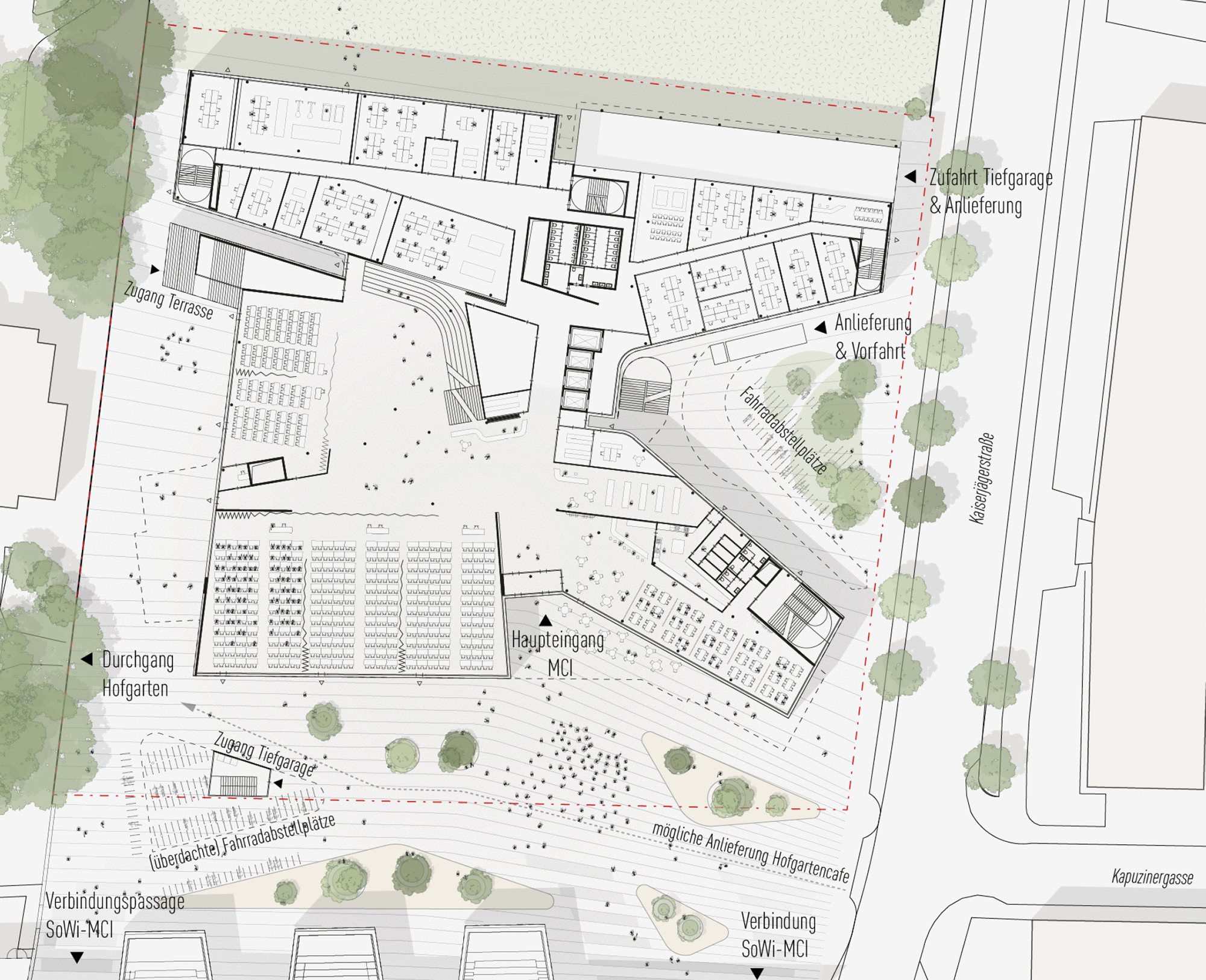
However, the strongest impact resulted from a suggestion that emerged from dialogue procedure: creating in the incision a stepped terrace landscape in the direction of the Hofgarten. In pursuing the potential offered by this suggestion in the interior, too, a generously sized atrium was made, which develops upwards in steps – with a unique indoors/outdoors relationship. Not only does this allow numerous outdoor work and relaxation areas to be made that face towards the Hofgarten and have a view of Innsbruck’s magnificent mountain backdrop, the view from inside on all storeys is also certainly most impressive.
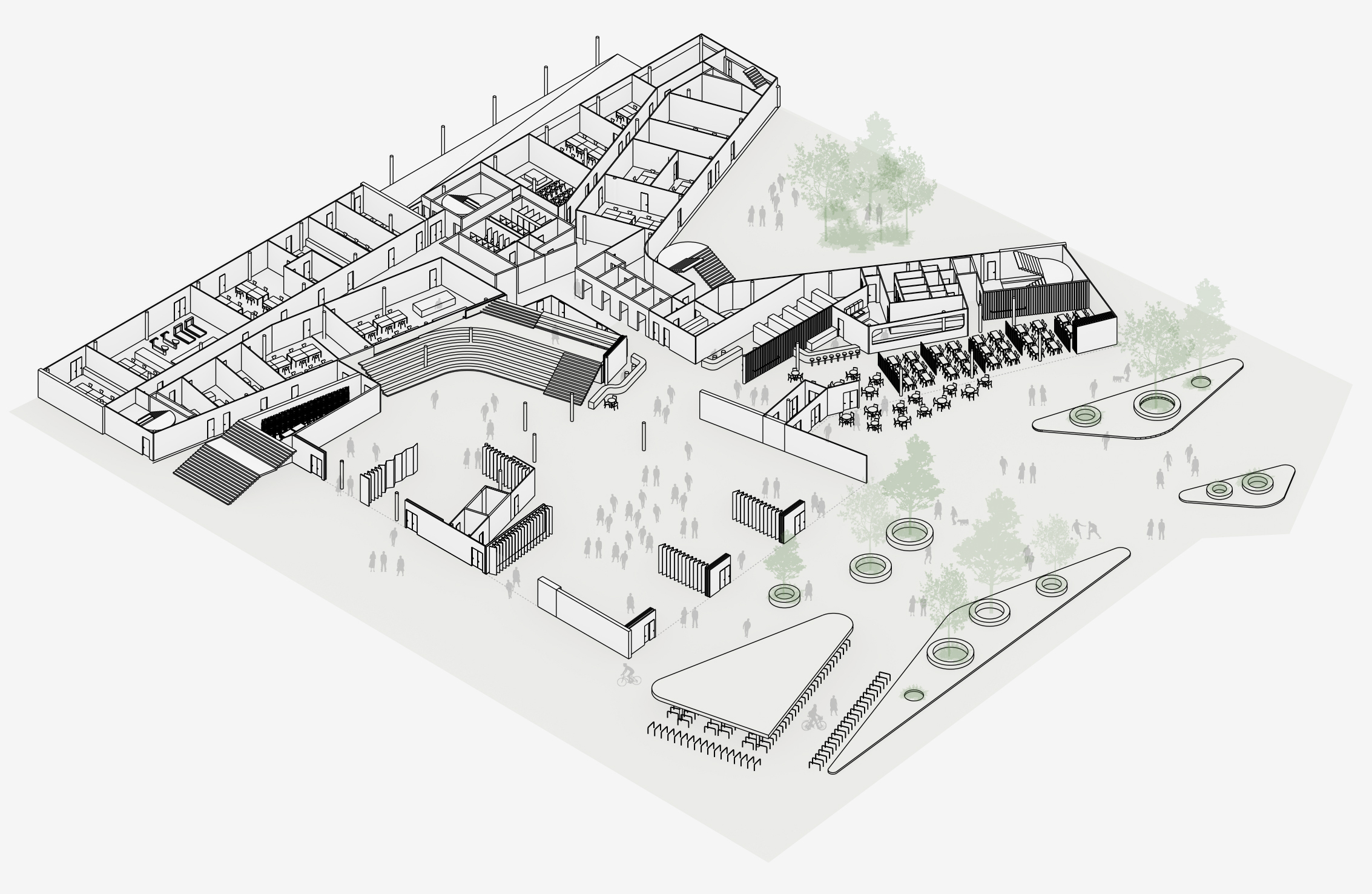
Landscape space and light from outside as well as the view from the centre of the building of the impressive surroundings, the landscapes that characterise the city of Innsbruck, are the quintessential features of the project.
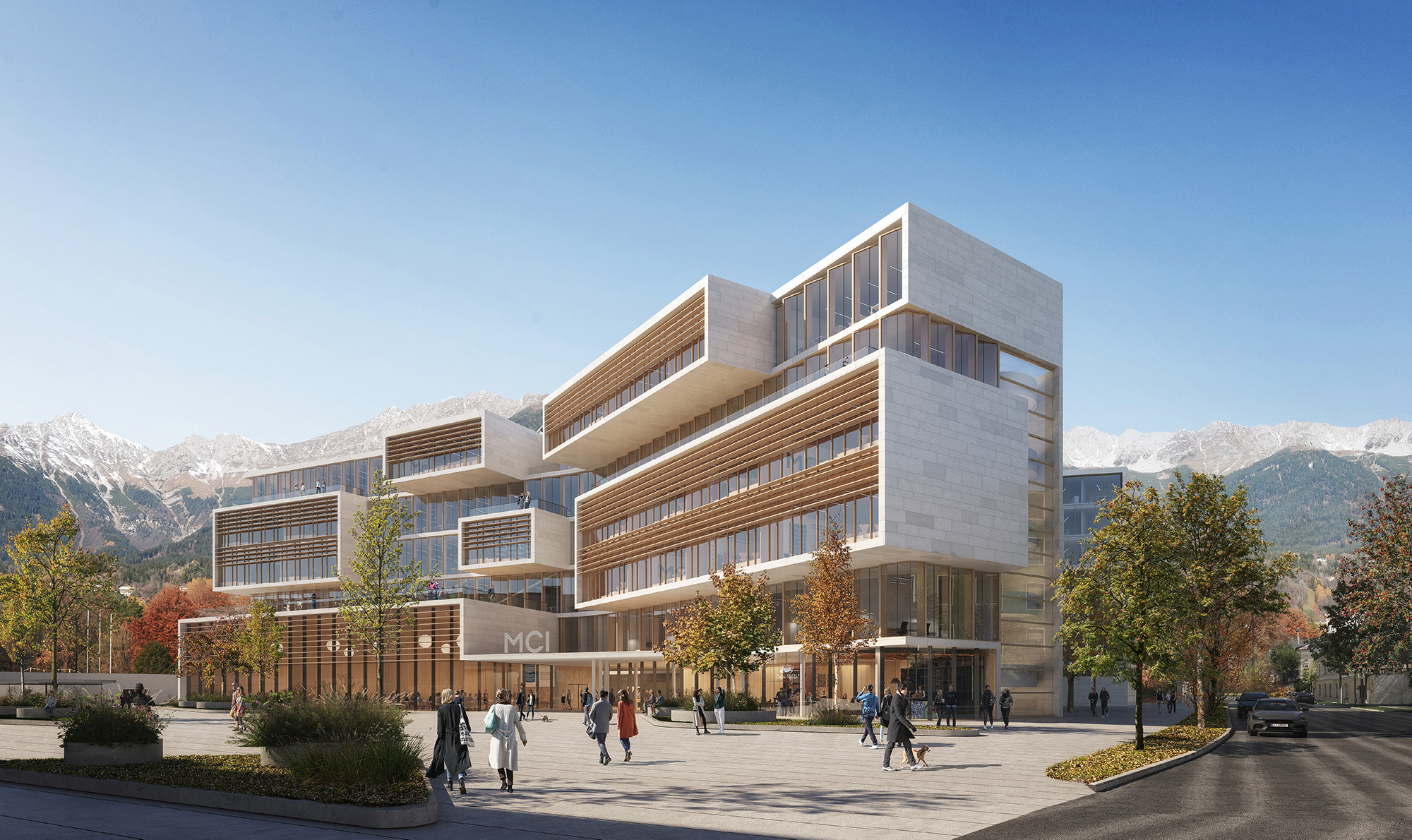
In addition, thanks to the new concept, this relationship can be practically experienced from the many terraces, loggias and other outdoor spaces that are found at different depths around the building. Towards the forecourt, too, we find loggias incised between the lecture halls, which can be used as outdoor classrooms. Time spent outdoors can take a variety of forms, from teaching to seminar-like group work, or can offer individual opportunities for withdrawal.

A building wing typology derived from the basic approach – and which is contextually referenced in the morphology of the urban volume – is transformed to such an extent that a significant and easily recognisable building is created that contributes to the institution being perceived as a special element in the urban system. The MCI acquires a value as a further important player in the condensed matrix of educational facilities in this part of the city.
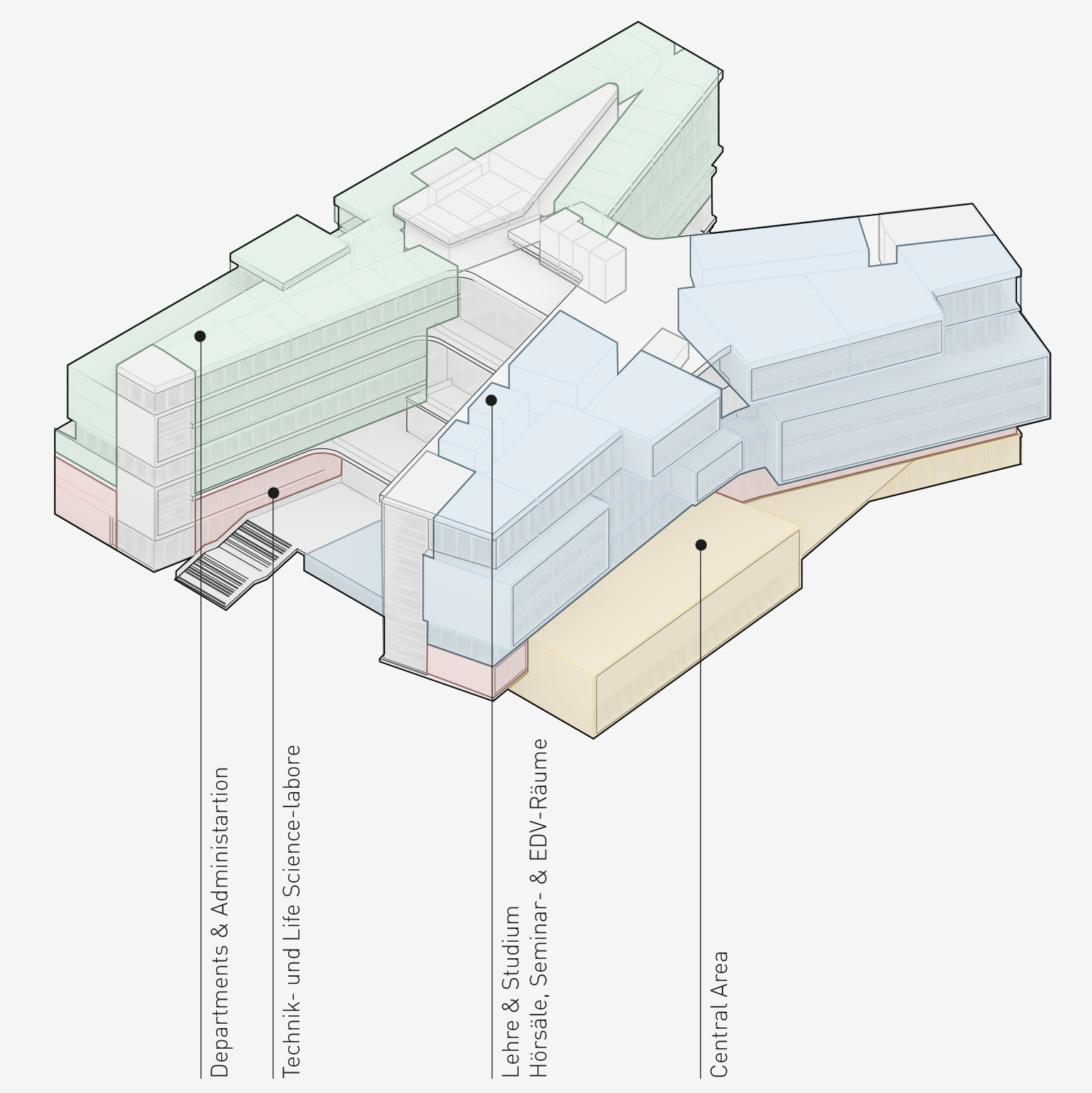
The MCI is a dynamic building and therefore reflects its contents outwards. The conical geometry of the wings, which widens towards the central core, as well as many other elements strengthen this aspect. The newly created atrium space in particular will be an unequalled experience. At the centre of the building the action levels converge around an open atrium. Here views and connections through the building enable interaction across different functional areas to be perceived and experienced.
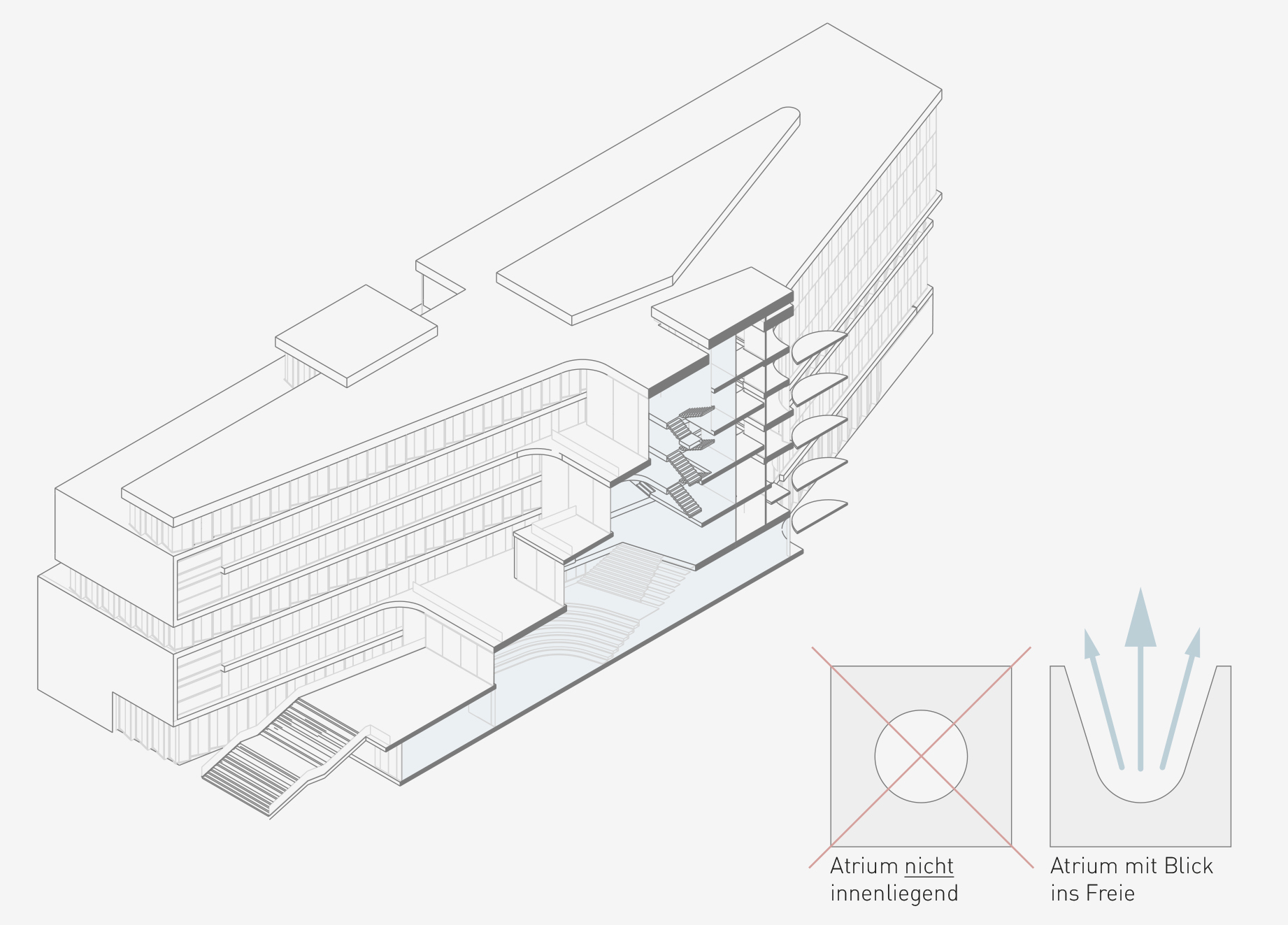
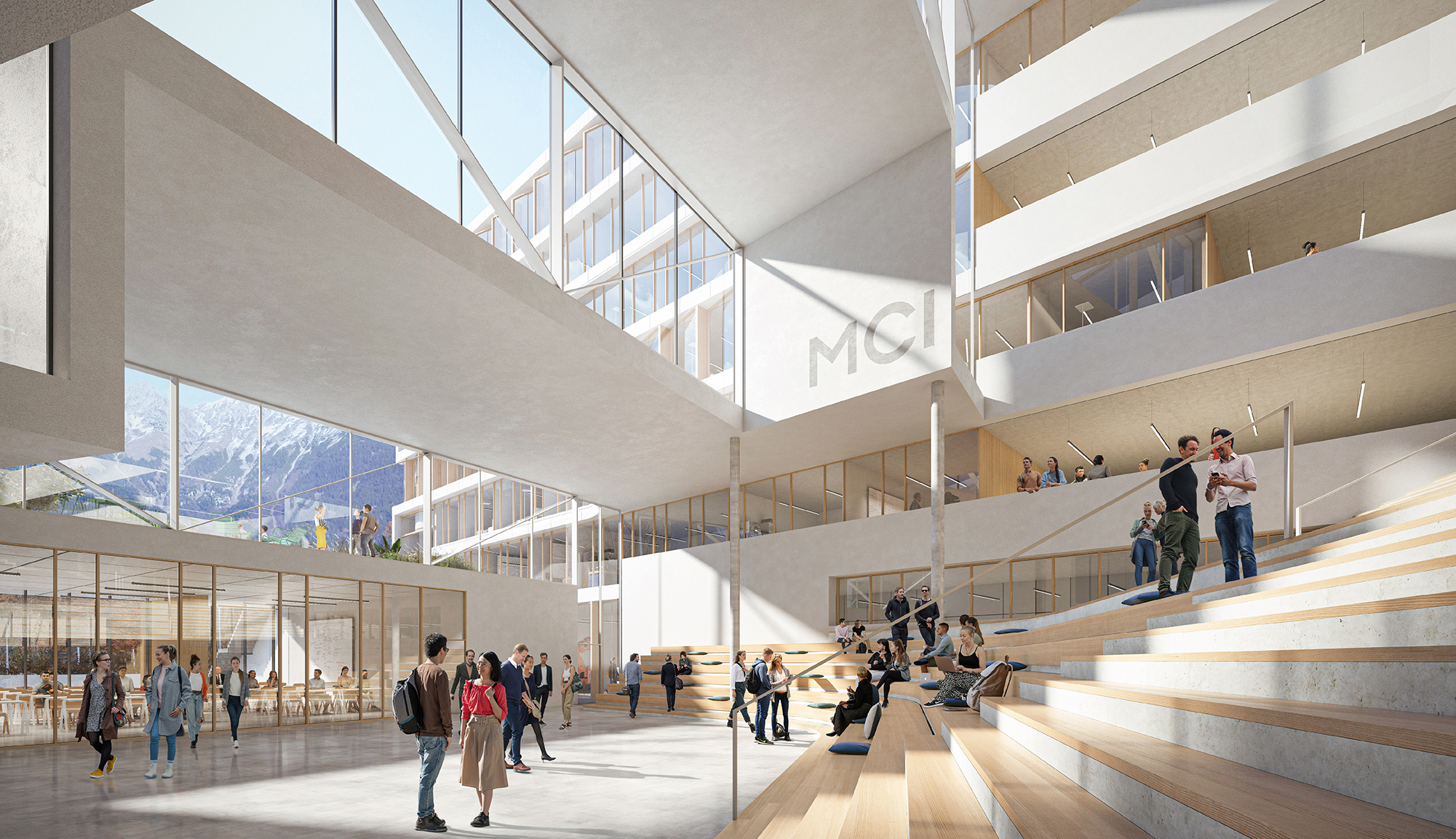
Out of the levels of the atrium areas for communication and for spending time in are generated, which outside the lecture halls and seminar rooms become circulation areas.
These are not corridors but staggered zones where it is agreeable to spend time and which, thanks to their location on the facades, are flooded with light and offer a friendly atmosphere. From here there are views of the surrounding landscape. The new arrangement of the lecture halls and seminar rooms also creates numerous small-scale niches and areas intended as quiet places, where one can prepare oneself, study, exchange ideas and similar.
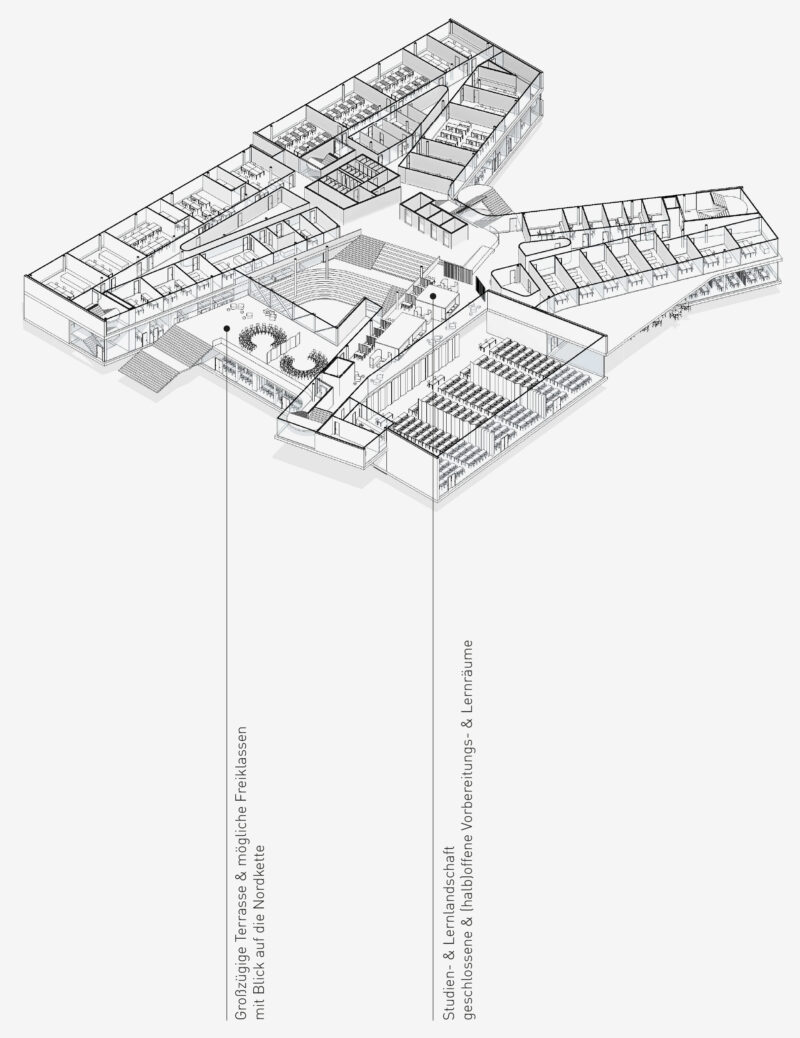
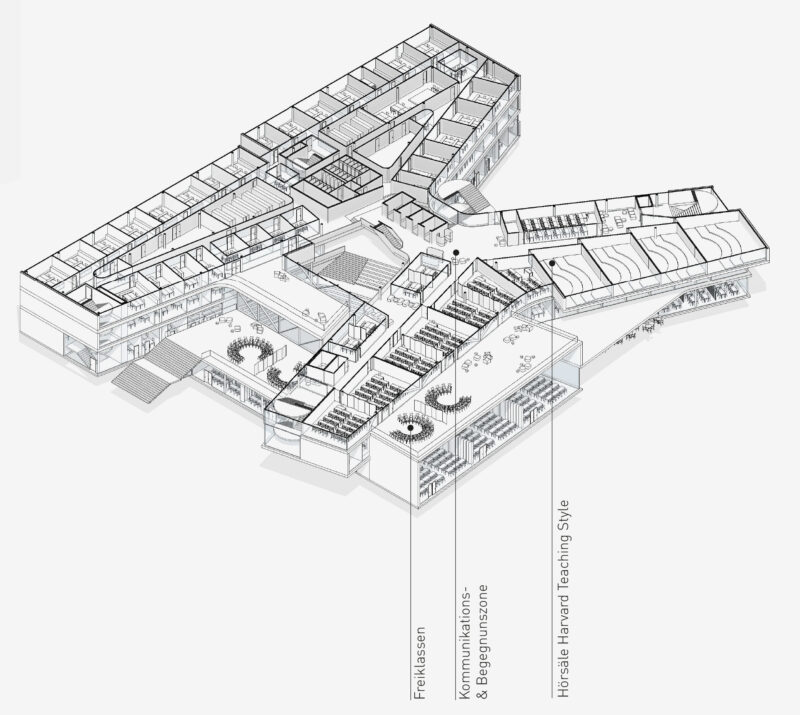
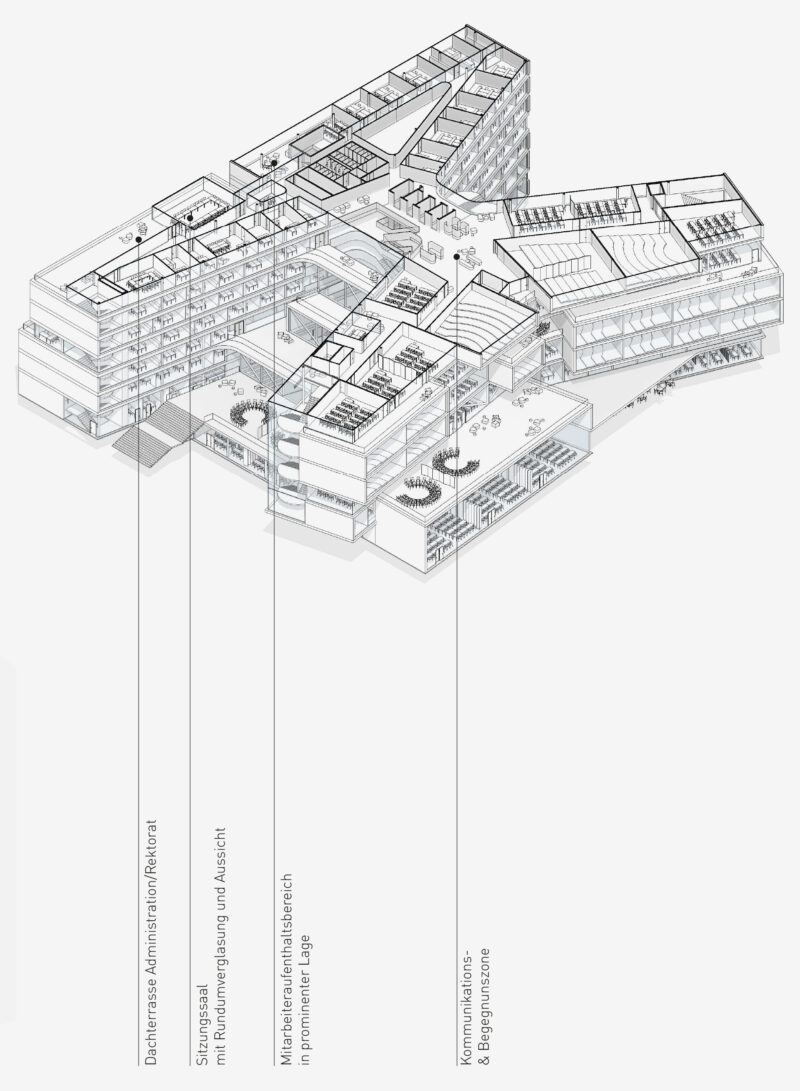
The positioning of the functional areas also contributes to clear orientation. Most of the lecture halls and seminar rooms are accommodated in the southern wing and face towards the forecourt. Through the way they project out of the facade plane the program boxes deliberately position their contents in public space. In this way the densely used internal areas interact virtually with public outdoor space in such a way that from the square one experiences the south facade as an extended, vertically self-generating, densely occupied “plane of the square“. The square itself, too, is designed to allow large gatherings or events to be held place there. Just imagine how the opened facades of the Audimax (Aula Maxima), which is directly on the level of the square, prolong the space of the square
into the interior of the building and simply eliminate the boundaries between inside and outside! With the cafeteria things are similar, with its glass fronts open and the threshold space of the canopy room it is made de facto into a general public area. The foyer becomes the central middle and a link between all the areas in the interior. A landscape of seating steps made here develops upwards in a vertical dramaturgy with the circulation systems that lead further. By opening the Audimax into this middle, and with the two lecture halls on the west side, which can be opened, at ground floor level an extensive zone develops which be used entirely, can also be seen into from outside, and corresponds with the MCI’s activities in public space.
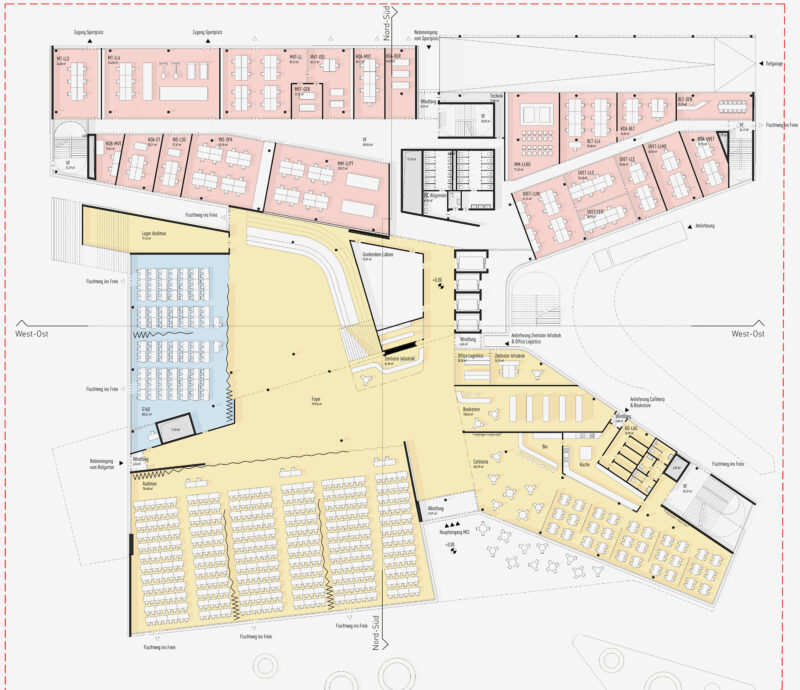
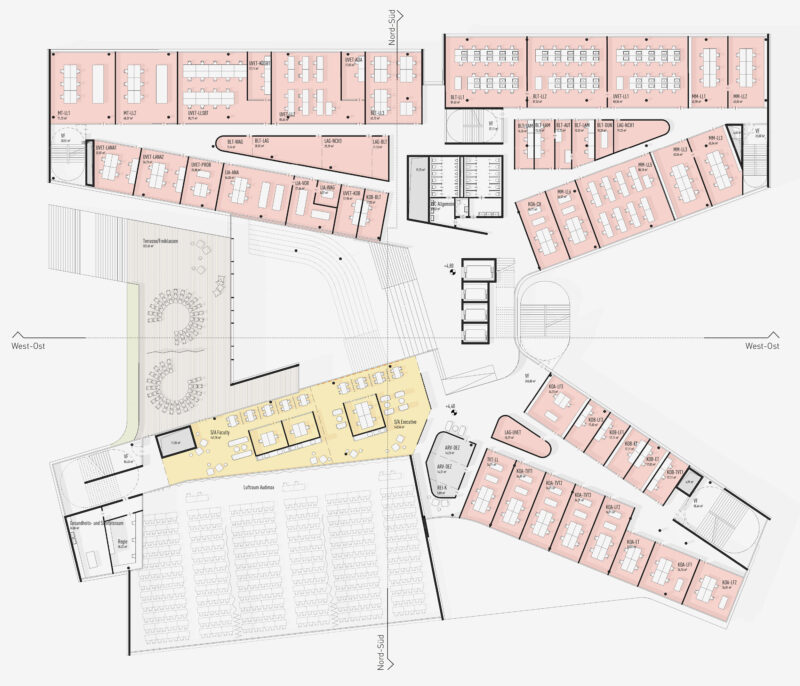
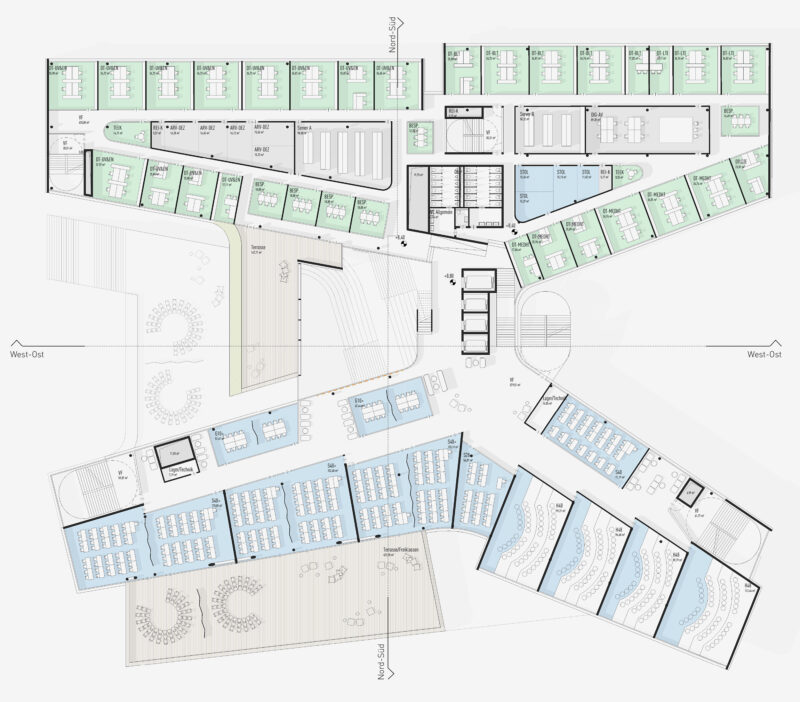
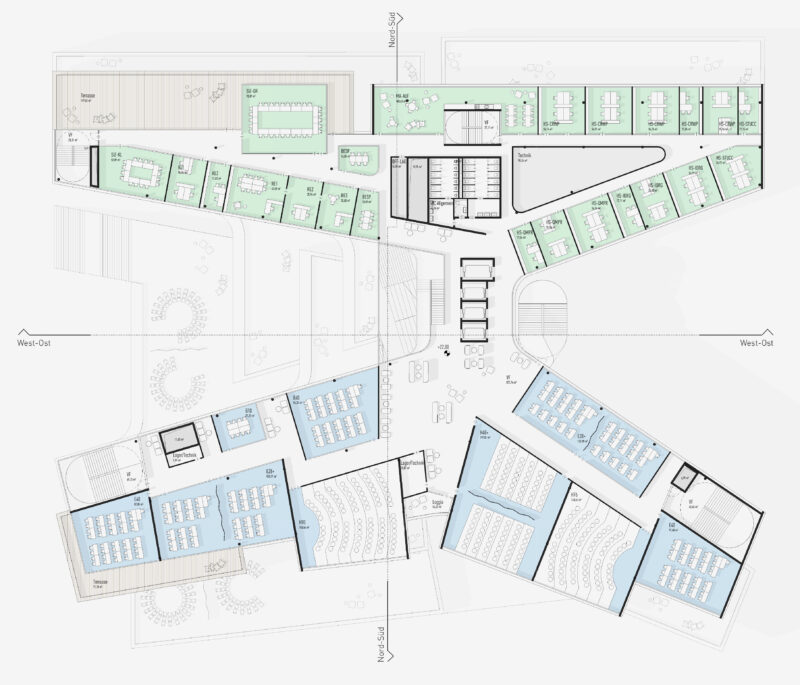
Most of the small-scale areas, such as laboratories and administrative units, are placed in the north wing. By means of the appropriate access regulations the different wings and zones can be allotted and organised from the central circulation zone. Similarly, fire compartments could be created by means of fire doors or fire curtains. The core areas in these wings are laid out in such a way that fluid movement through them is possible, even with loads. Deliveries to these areas are made at ground floor level from the courtyard, which has vehicular access on the east side. Bike parking spaces for staff members are also located here.
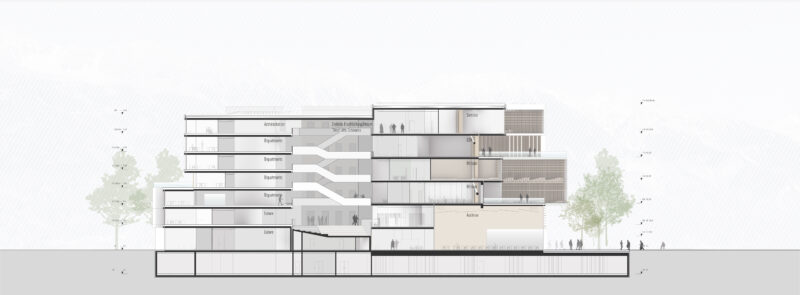
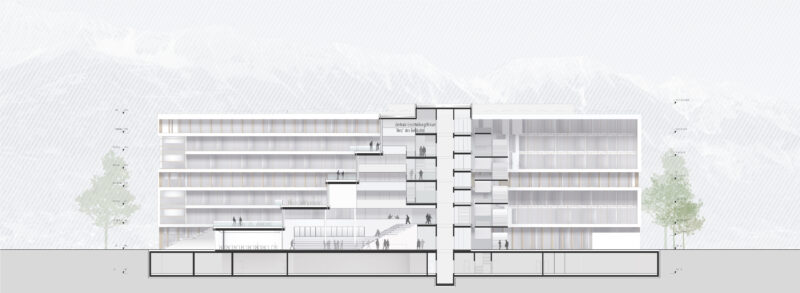
The MCI – it relates to its surroundings and meshes with them through the zoning of the outdoor space. It presents itself self-confidently with its formal idiom and expresses its identity as a dynamic factor in this district.

Architecture
Pichler & Traupmann Architects
Design team
Bartosz Lewandowski (team leader)
Anna Gulinska
Elisa Mazagg
Anna Salakhova-Chakhal
Client
Arge MCI Campus (PORR Bau GmbH, Ortner Ges.m.b.H.)
Structural fire protection
IBS - Institut für Brandschutztechnik und Sicherheitsforschung GmbH
Hard facts
Start of planning: 2021
Usable floor area: 32.638 m²
Gross floor area: 38.475 m²
Location: Innsbruck
Function: Management Center (private university)
Scope: Architecture competition with previous application
Renderings
Patricia Bagienski, Vienna
Model
Harald Schmidt, Vienna
